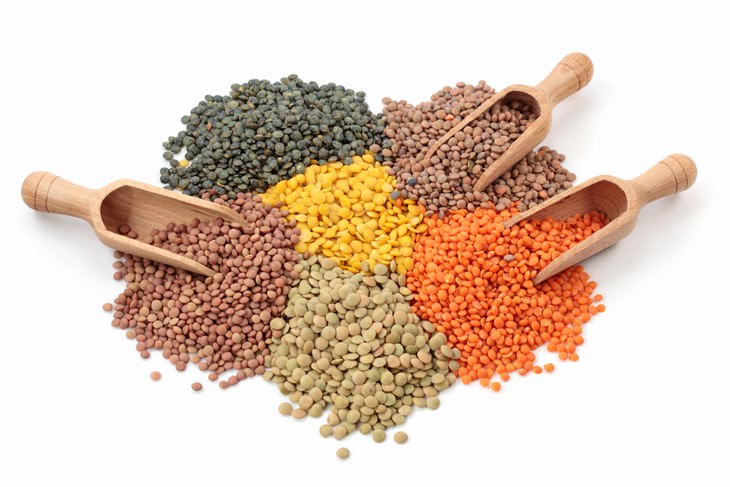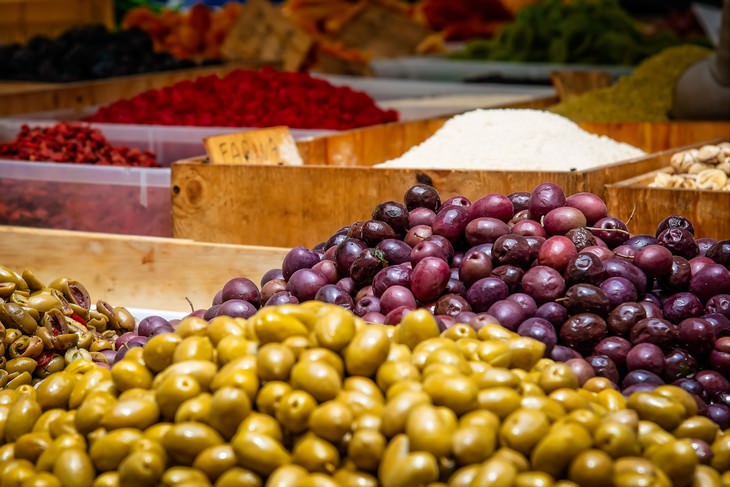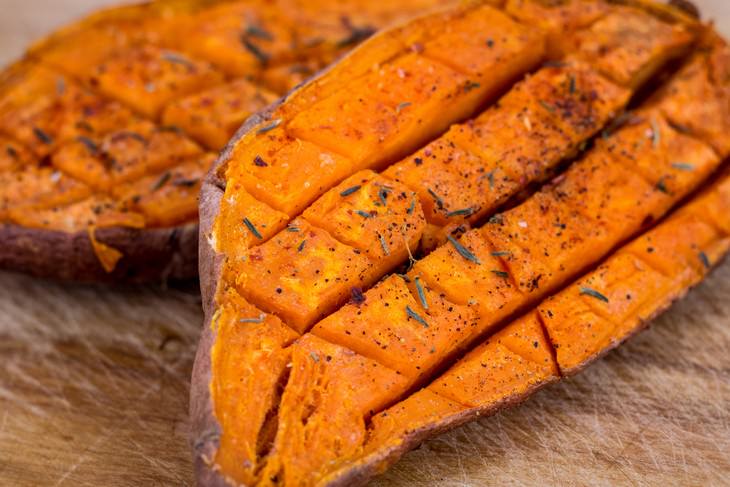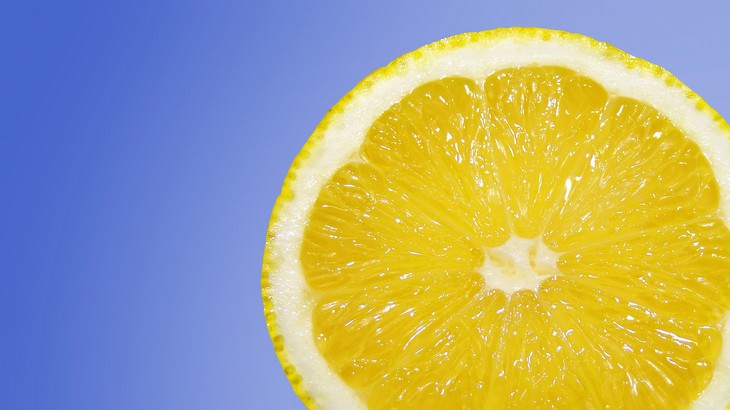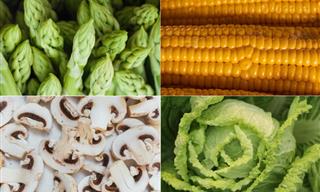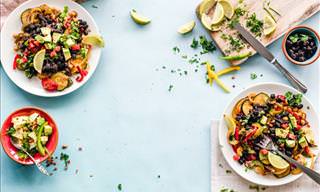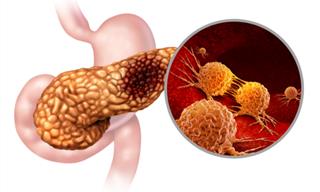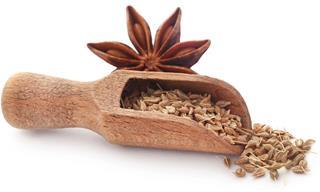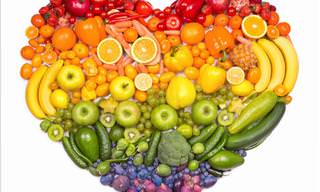How Many Fruit and Vegetables Should We Eat?
The World Health Organization, the U.S. National Health Service (NHS), as well as other health organizations worldwide recommend eating 400 g (14 oz) of fruit and vegetables a day, which equals to 5 portions.
The health organizations assure that this so called 5-a-day approach to nutrition can lower your risk of many serious health issues, such as stroke, heart disease, and certain types of cancer.
But this is only half of the story, as guideline was further questioned by researchers at the Imperial College in London, who determined that we should actually double that amount and eat up to 10 portions of fruit and vegetables a day!
Their analysis suggests that eating so many plant-based foods reduced the risks for the following diseases:
- 24% risk reduction of heart disease
- 33% reduced risk of a stroke
- 28% reduction of the likelihood of cardiovascular disease
- 13% reduced risk of cancer
- 31% reduction of premature death.
And while these numbers look very optimistic, meeting the daily requirement of 10 portions seems impossible. Luckily, according to the 10-a-day philosophy, the fruit and veg doesn’t have to be consumed raw and whole, which gives a little more flexibility to those who want to enjoy the benefits of the diet without turning it into a tiresome chore.
In the end, we want to enjoy our food, don’t we? So here are some delicious and unexpected foods that can count in your 10-a-day (or 5-a-day) diet and are really easy to sneak into your daily meals.
1. Guacamole
Avocados are packed full of so many essential nutrients, that it’s almost a sin (in a nutritionist’s eyes, at least) not to eat them. No only do they contain healthy fats, but they can also protect you from cardiovascular disease. For even more health benefits, read out article about the health benefits of avocados.
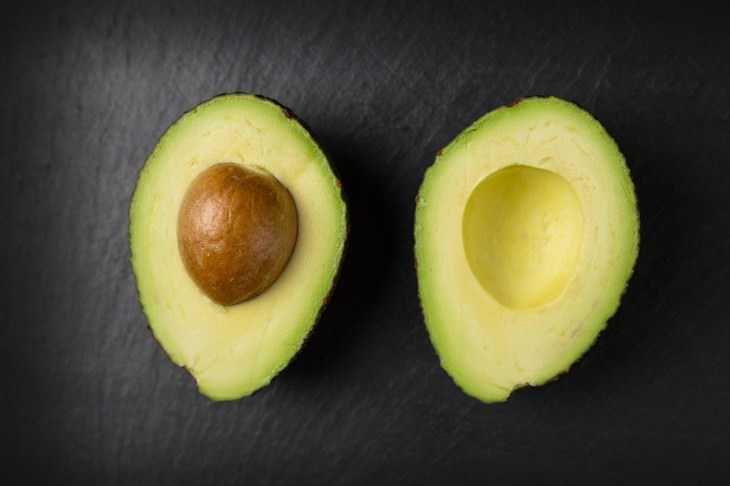
To incorporate avocados into your diet, you can prepare guacamole and use it as a sauce to accompany your salads, as a spread on sandwiches, tortillas and burritos, or a dip.
A small-to-medium avocado equals 1 serving of your daily norm of fruit and veggies.
2. Lentils
One cannot go wrong with lentils either. There are several kinds of them, but all are an amazing source of plant protein and have so many health benefits, from anticancer properties to weight loss.
Read more about how lentils can boost your health in the article 10 Health Benefits of Lentils. The best thing is that only 3 tablespoons of lentils make an entire portion, so you can easily sneak them into a salad, a soup or simply serve it as a side dish.
3. Chickpeas
Chickpeas and lentils are from the same family of plants, so, like lentils, chickpeas are an excellent source of protein and fiber in your diet. Apart from that, they can be prepared in a variety of ways.
The same as lentils, 3 tablespoons will count as one serving, but if you eat more, it still counts as one portion, as it is quite high in starches and so one shouldn’t eat too much.
The variety of foods that can be made with chickpeas is mind-boggling, too: make hummus, falafel, or add chickpeas to any salad or soup of your liking.
4. Olives
A great source of vitamin E, olives are an essential in a healthy diet. Eating olives is associated with a healthy heart and bones, too. Once again, we have a very useful article explaining the health benefits of olives that can be accessed here.
Unfortunately, you’ll need about 30 of them to count as 1 entire portion of fruit and vegetable, but even half of that amount will let you enjoy the health benefits of olives, so it’s essential to incorporate them in your diet anyway.
5. Tomato Puree
Tomatoes are an excellent addition to your diet in any shape or form, but if you’re short on your daily intake of vegetables and fruit, only 1 tablespoon of tomato puree will do the trick of adding an entire portion, fast and easy.
In fact, tomato puree contains all the goodness that tomatoes have: the folic acid, iron and potassium. To learn how eating more tomatoes can improve your health, just read this article about 10 Health Benefits of Eating Tomatoes.
6. Sweet Potatoes
Although potatoes don’t count as a portion of vegetables because it mainly contains starches, sweet potatoes do, since they’re so rich in vitamin A. Also, sweet potatoes can aid digestion and are known to have stress-reducing properties.
We discuss even more of the benefits of sweet potatoes in this dedicated article. 1 medium potato, be it mashed, baked or even fried, will count as 1 daily portion of vegetables, but more will not count as another portion, the same as the chickpeas.
7. Lemon Juice
One of the easiest ways of adding a portion of fruit to your daily meal plan is freshly squeezed lemon juice. Combine the lemon juice in a glass or two of lemon water, about the benefits of which we have written here, or that in your salad dressing, and they will surely pile up to 4 tablespoons (¼ cup, or 60 ml), equaling 1 daily portion of fruit.
8. Popsicles
We know that it may sound a little surprising, but 1 popsicle can count as 1 portion of fruit, if it’s made of 100% fruit juice, that is. The same goes for the juice, by the way: 1 cup of juice counts as one portion of fruit.
Both of these are so easy to add to your diet, just make sure to buy the 100% variety. Popsicles are so easy to make, too: just freeze some juice in a special container, or a regular cup of juice, sticking an ice cream stick into the cup halfway the process, and enjoy.
These were all the tips we had in store for you today, stay healthy and try to add as much fruit and vegetables into your diet, as you can. We hope this article was informative and useful to you.
 Go to BabaMail
Go to BabaMail




